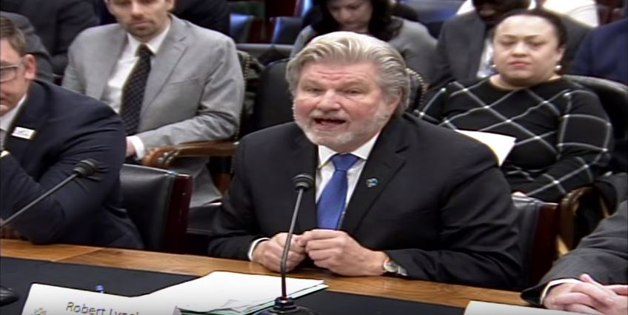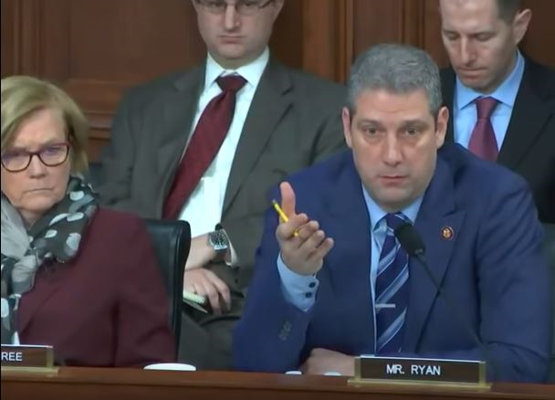Increased Scope of Legislative Priorities Bears Fruit
Posted by Feb 05, 2020

Mr. Peter Gordon
In a process that began over a year ago, the Arts have gained increased support and funding through the Congressional appropriations process. While traditional legislative priorities—the National Endowment for the Arts (NEA), the National Endowment for the Humanities (NEH), arts education, etc.—garnered increased funding and support language from legislators, new areas—creative arts therapies (CATs) for veterans and service members and arts programs for at-risk youths—also were recognized and encouraged by appropriators for the fiscal year (FY) 2020 funding cycle. These additional legislative wins were made possible by an active Congressional Arts Caucus and Senate Cultural Caucus, a growing coalition of pro-arts organizations, and motivated grassroots advocates in every state.
 This process began in February 2019, when Interior Appropriations Subcommittee Chair Betty McCollum (D-MN) announced that the Subcommittee would be holding its first Public Witness Hearing for non-tribal programs since March of 2015. Wanting to be sure that a case for increased arts funding was made, Americans for the Arts worked with Subcommittee staff to secure two spots for testimony. With the idea to focus on the NEA’s Creative Forces initiative,[1] Americans for the Arts reached out to our colleagues at the American Art Therapy Association to ask them to formally request a second witness spot. The result was testimony from Americans for the Arts President and CEO Robert L. Lynch and testimony from Master Gunnery Sergeant Chris Stowe, USMC Ret., urging the Subcommittee to increase funding for the NEA to no less than $167.5 million for FY 2020. Both witnesses discussed the Creative Forces program and how an increase in funding for the NEA was vital in order to sustain and expand important work that serves the needs of military service members and veterans who have been diagnosed with traumatic brain injury (TBI) and psychological health conditions.
This process began in February 2019, when Interior Appropriations Subcommittee Chair Betty McCollum (D-MN) announced that the Subcommittee would be holding its first Public Witness Hearing for non-tribal programs since March of 2015. Wanting to be sure that a case for increased arts funding was made, Americans for the Arts worked with Subcommittee staff to secure two spots for testimony. With the idea to focus on the NEA’s Creative Forces initiative,[1] Americans for the Arts reached out to our colleagues at the American Art Therapy Association to ask them to formally request a second witness spot. The result was testimony from Americans for the Arts President and CEO Robert L. Lynch and testimony from Master Gunnery Sergeant Chris Stowe, USMC Ret., urging the Subcommittee to increase funding for the NEA to no less than $167.5 million for FY 2020. Both witnesses discussed the Creative Forces program and how an increase in funding for the NEA was vital in order to sustain and expand important work that serves the needs of military service members and veterans who have been diagnosed with traumatic brain injury (TBI) and psychological health conditions.
Following the hearing, Americans for the Arts staff and Mr. Stowe went to meetings with staff from the offices of Sens. Marco Rubio (R-FL) and Jack Reed (D-RI) and Reps. Debbie Wasserman Schultz (D-FL), Ken Calvert (R-CA), and Tim Ryan (D-OH)—who subsequently asked a question on our behalf about art therapy in a Veterans Affairs (VA) hearing—to highlight the importance of CATs and discuss the possibility of getting additional support for them in the Department of Defense (DoD) and VA. It was this outreach that resulted, for the first time ever, in the inclusion of creative arts therapies by name in Defense and Veterans Departments’ appropriations bills.
While Americans for the Arts was advocating for increased support and funding for CATs, the opportunity to work on another appropriations bill emerged. Our colleagues at Carnegie Hall joined the 2019 National Arts Action Summit (NAAS) as a National Partner and led the charge to include Arts and Juvenile Justice in the Congressional Arts Handbook.
Carnegie Hall was instrumental in the organization of Hill outreach to the Commerce, Justice, Science, and Related Agencies (CJS) Appropriations Subcommittees in both the House and the Senate. This included meetings on the House side with majority staff for the CJS Subcommittee and staff from the offices of Reps. Bob Aderholt (R-AL) and Martha Roby (R-AL)—both Subcommittee members.
On the Senate side, meetings took place with staff from the offices of Sens. Lamar Alexander (R-TN), John Kennedy (R-LA), Jeanne Shaheen (D-NH), Dianne Feinstein (D-CA), Jack Reed (D-RI), Jeff Merkley (D-OR), and Tammy Baldwin (D-WI). Both the House and Senate outreach was supplemented with targeted grassroots outreach—to Americans for the Arts members who are constituents of members of the CJS Subcommittees—through our VoterVoice platform. The VoterVoice alerts allowed constituents to reach out directly to their representatives on the Subcommittees, asking them to support arts-specific programming for at-risk youth in the CJS bill.
There was also outreach to the Trump administration in a meeting with Office of Juvenile Justice and Delinquency Prevention (OJJDP) Administrator Caren Harp to discuss our work with Congress and how the potential inclusion of funds or directive language could inform OJJDP’s support of arts programs in the juvenile justice space.
Several other factors helped to reinforce these efforts, including:
- Outreach by arts advocates—trained at 2019 NAAS—who took their personal stories to Capitol Hill on Arts Advocacy Day;
- The work of our State Advocacy Captains, who reached out to their members of Congress throughout the year to reiterate these important priorities;
- Grassroots outreach from around the country from arts advocates who took action on our periodic VoterVoice alerts on the CATs and juvenile justice issues; and
- The Arts Action Fund, who brought up these legislative priorities at campaign events for members of Congress on key committees.
All of this groundwork created good working relationships with the staff and Members of Congress who were in charge of writing the FY 2020 Department of Justice funding bills, and our efforts were rewarded in the form of report language in the House and Senate CJS appropriations bills that directed OJJDP to included arts-based juvenile justice programs among its strategies.
While all of this was incredibly encouraging, it wasn’t clear that the FY 2020 appropriations process would conclude on time (by Oct. 1, 2019—the official start of FY 2020), or that Congress and President Trump would come to an agreement on all 12 bills to fund the government (or at least the DoD, VA, and CJS bills where these priorities existed). Without an agreement, it was likely that the government would be funded under a continuing resolution (CR), which would maintain current funding levels and not include any new priorities such as ours.
In the end, Congress did need to pass a short-term CR, but ultimately an agreement was reached on complete funding for the government, and President Trump signed the bills into law on Dec. 20. The work that began in the lead-up to 2019 NAAS was ultimately rewarded and Americans for the Arts, along with our colleagues, saw new legislative priorities around CATs and juvenile justice achieved.
As the FY 2021 appropriations process is set to begin next week with the delivery of President Trump’s budget to Congress (scheduled for Feb. 10), our work to build off last year’s successes has already begun. Collaboration with our National Partners on the key issues for the 2020 Congressional Arts Handbook are ongoing and we are gearing up for the 2020 National Arts Action Summit. On March 31, arts advocates will be asking Congress to fund the NEA at a level of $170 million for FY 2021—a $7.75 million increase over the FY 2020 level—as well as encouraging increased support of CATs and juvenile justice arts programming. Hopefully, by following similar steps as last year, we will see equivalent (or greater!) outcomes.
[1] Creative Forces: NEA Military Healing Arts Network is an initiative of the National Endowment for the Arts in partnership with the U.S. Departments of Defense and Veterans Affairs and the state and local arts agencies that serves the special needs of military patients and veterans with traumatic brain injury and psychological health conditions, as well as their families and caregivers.







